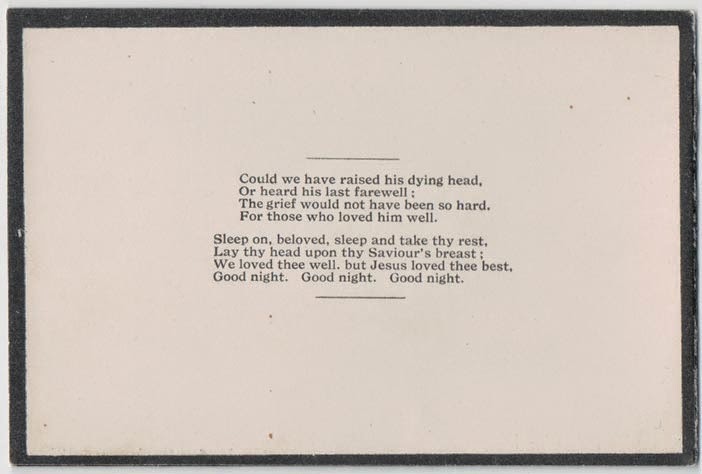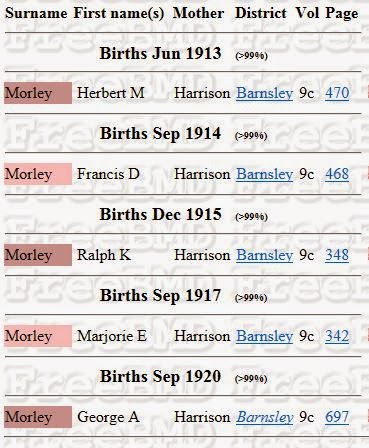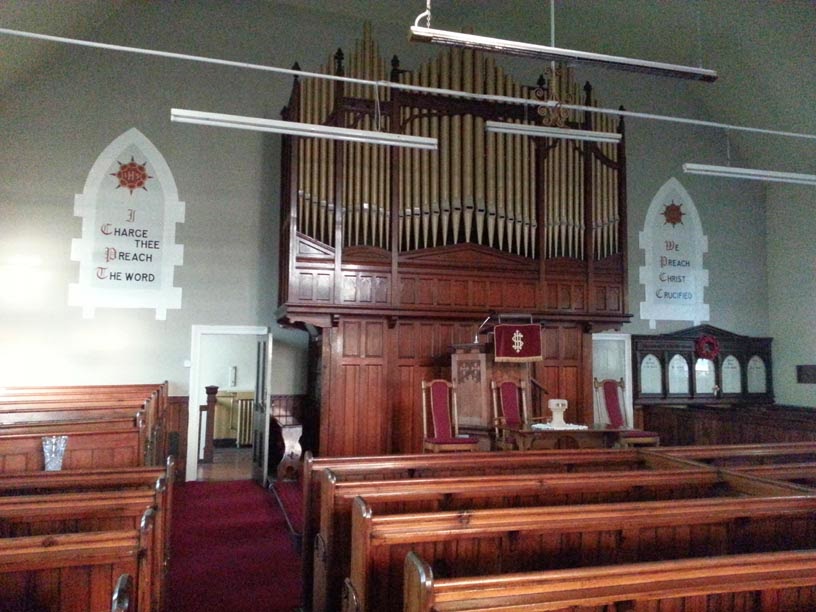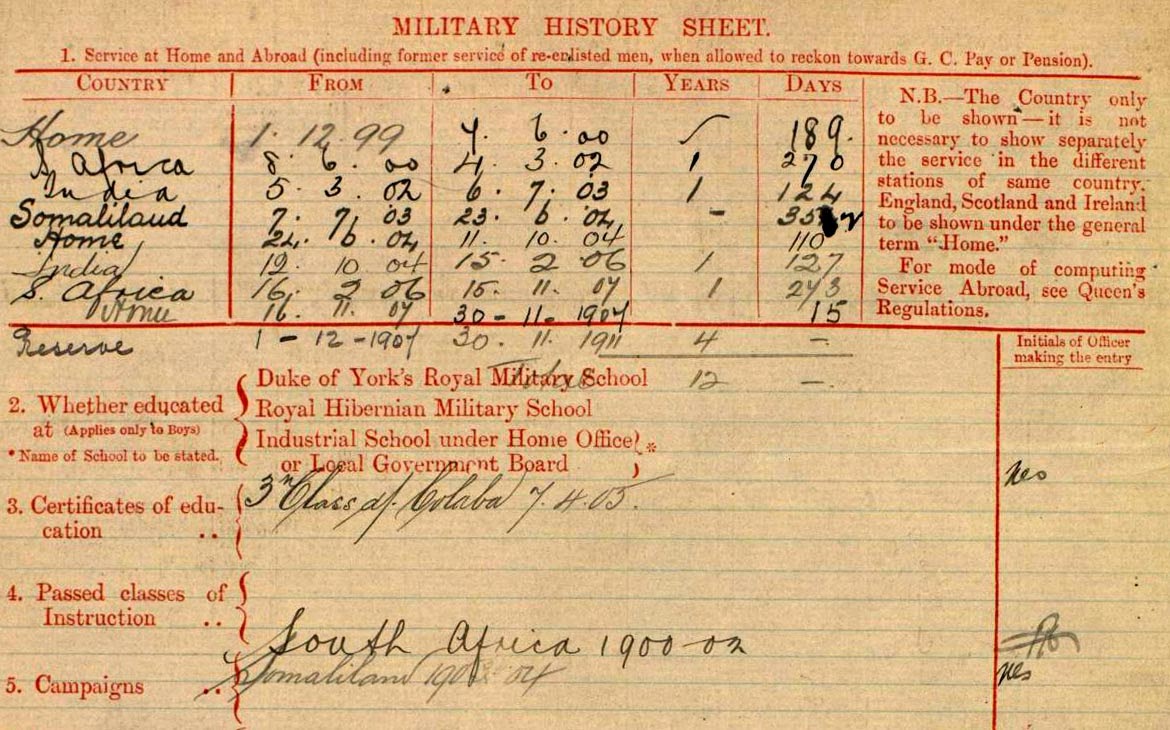SG turned up at the Cudworth Local History and Heritage Group (CLHHG) meeting today after phoning me to double check time and place. He had brought the little memorial card and very reverently I copied it with my FlipPal scanner.
 |
| Front of the card - folded edge to left (the back was plain) |
 |
| Inside of card - left hand face - with two verses |
The card was about the size of a large post-it note, 4"x 3" (look I'm old I work in imperial! - that's 10cm x 7.5cm for you modern people!) and it had obviously been kept folded so the dedication was visible. When I opened it out to see the front the hinged part felt very delicate.
Now I'm back home I'm going to see what else I can find out about George Alfred Morley.
For starters he's in the CLHHG book, Lest Cudworth Forgets, and he is listed on the Cudworth War Memorial as SG suspected. His entry in the book includes a little photograph which looks as it it probably comes from the Barnsley Chronicle and notes, "George Alfred Morley, single, was the son of Mr C H Morley of 181 Pontefract Road, Cudworth. Prior to enlisting at Barnsley he worked as a miner at Grimethorpe Colliery. Private Morley died of wounds on Tuesday the 1st August 1916 and was buried in St. Pol Communal Cemetery Extension, grave No. B 21."
The above is confirmed by his entry on the Commonwealth War Graves Commission website (CWGC), which also tells us that St Pol-sur-Ternoise is in France and was the site of the No.12 Stationery Hospital from 1 June 1916 to 1 June 1919. There are over 200 war casualties commemorated on the site.
 |
| 1911 census snip for 189 Pontefract Road, Cudworth (from Ancestry) |
In 1901 the Morley family are in Carrington, a suburb of Nottingham. Ellen Morley is still alive at this point and George Alfred aged 6 years is their youngest child. A search of FreeBMD tells us that Ellen Lettice Morley (thank goodness for the middle names being mentioned on the memorial card) died in Q4 (Oct, Nov, Dec) 1904 in Nottingham aged 37 years. Charles Henry Morley marries Mary Ann Harrison (ah, ha!) in Q4 1905, also in Nottingham.
The 1911 census should tell us how long a couple have been married and how many children they have had in total, how many are still alive and how many have died. Unfortunately Charles and Mary Ann have not filled in these boxes correctly ... if you look back to the 1911 snip above you will see that the box immediately after the word married in Mary Ann's row has a red question mark in it - this looks as if it was added later as a query to the blank box. They claim there are four children to this marriage and all are still living - yet only two children in the listing can have been born since 1905, Catherine and Arnold. So where are the others?
A search of the burial and baptism records for Cudworth St John's Church shows a very sad story indeed.
Burials at St John's Cudworth
MORLEY William Henry Arnold B 7 W 26 22mths 21/09/1907 189 Pontefract Road
MORLEY Winifred Mary B 7 W 26 9mths 24/12/1907 189 Pontefract Road
MORLEY Catherine B 12 W 8 2 21/11/1912 189 Pontefract Road
MORLEY Marjorie Edith B 12 W 8 2mths 06/09/1917 181 Pontefract Road
MORLEY George Alfred B 12 W 8 2 25/01/1923 181 Pontefract Road
The addresses of all the above burials fit the Morley family addresses that we know from the CWGC entry and the 1911 census. William Henry Arnold Morley died in September 1907 aged 22 months, so he was born around November 1905, rather close to the marriage of Charles and Mary Ann. There is a William Henry A Morley born in Nottingham registration district at the right time. Winifred Mary died in December 1907 aged 9 months, making her born in March 1907. There is a Winifred Mary Morley born in Barnsley in Q2 (Apr, May, Jun) 1907 who fits. So these are the other two children born to Charles and Mary Ann who are not on the census return.
 |
| FreeBMD results as described |
Continuing we see that Catherine Morley dies in November 1912 aged 2 years, this is the older of their two surviving children on the census. Later a Marjorie Edith dies aged 2 months in 1917 and a George Alfred dies in 1923 aged 2 years (so born 1920 to 1921).
It is possible, after 1911, to search the birth records on FreeBMD cross referencing Surname with mother's maiden name. Putting in Morley and Harrison and restricting the search to 1911 to 1930 in the Barnsley area brings back five children born between 1913 and 1920.
There is Marjorie born Sept Q 1917 and George A born Sept Q 1920. Plus three other children, Herbert, Francis and Ralph. Thank goodness, at least some of Charles and Mary Ann's children appear to have survived!
A quick look in the St John's Cudworth, baptism records confirms the above are all Charles' children.
I do find it very sad that Charles named his last son after his son who was killed in the war and whose memorial card started off this story, and that little George Alfred only lived a couple of years himself. A double whammy for the family and after so many other losses.
Going back to the elder George Alfred Morley very luckily his Army Service Records survived the blitz and are available on Ancestry. He enlisted in October 1915 and appears to have arrived in France in April 1916. We now know he was 5' 8" tall and weighed 136 lbs, that's less than 10 stone, so he was a bit on the skinny side although the record also states that his physical development was good. He seems to have joined the 13th Yorks and Lancaster (1st Barnsley Pals) later than many others, his regimental number bears this out, it is 13/1482. He goes directly to France whereas the rest of the regiment had a period in Egypt first.
 |
| Snip from George Alfred Morley's Casualty Form (from Ancestry) |
We know he died on 1 August of 1916, but the records above show that he was wounded on 1 July 1916, which was the first day of the Battle of the Somme. He was transferred to the 12 Sty Hosp, at St Pol which must be the No.12 Stationary Hospital we noted from his CWGC entry. I am not sure what the actual nature of his wounds were - but could that note on the 2 July say Shell Wo Head? A head wound caused by a shell fragment maybe? If so he was indeed dangerously wounded as it states on 4 July. Despite some improvement in the first few days he died of his wounds on 1 August in that same hospital.
A letter in his records gives us every clue we need to the reason why his memorial card was kept by SG's grandfather.
 |
| A snip from the letter from the War Office to the Officer in Charge of Infantry Records at York (from Ancestry) |
Oh, my! Amelia is SG's grandfather's sister! She and George Alfred Morley must have been sweethearts. Oh, dear, I'm starting to bubble up now, excuse me ....
George Alfred's British War Medal and Victory Medal were sent to his father in 1921.





















